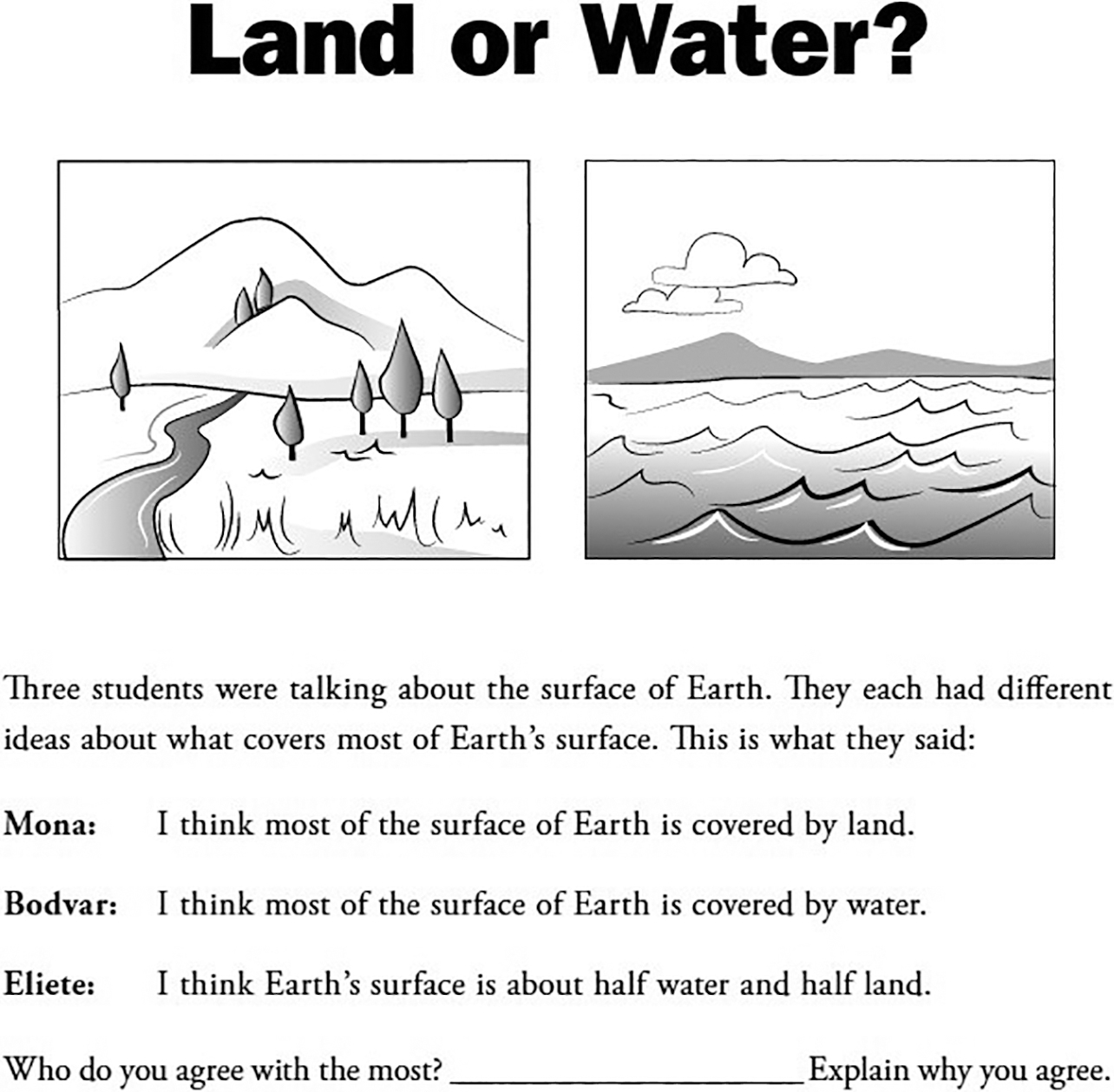Formative Assessment Probes
Using Formative Assessment Probes With Real or Virtual Field Trips
On a recent visit to the IMAG History and Science Center in Fort Myers, Florida, I sat with a class of fifth graders as they were learning about Earth systems at the museum’s Science On a Sphere exhibit. Researchers at NOAA developed this exhibit, which is currently on display at science museums across the country—a six-foot diameter sphere on which video projectors display Earth’s geosphere, atmosphere, hydrosphere, and biosphere with real-time data. As students learned about the distribution of water on Earth, I realized how useful it would be to precede a field trip experience, whether in real time or virtually, with a formative assessment probe.
Using a formative assessment probe prior to a real-time or virtual field trip activates students’ thinking about the concepts and phenomena they will be learning about during their experience. It also provides useful formative assessment data that elicits students’ initial ideas prior to the field trip so that the teacher and the exhibit presenter are aware of and can address students’ preconceptions during their learning experience. Returning to school after the field trip, the teacher can use the same probe a second time, providing an opportunity for students to revise their initial ideas and construct a new, scientific explanation based on the evidence and information they gathered from their field trip experience.

Shadow Size probe.
For example, prior to observing the hydrosphere projection on the Science On a Sphere exhibit, students could be asked to predict what covers most of the Earth’s surface using the “Land or Water?” formative assessment probe (Keeley and Tucker 2016). A commonly held response is Eliete’s: “I think Earth’s surface is about half water and half land.” During the presentation, students observe and learn that most of Earth’s surface is covered by ocean. There is also fresh water from the ice caps and a small amount of water in Earth’s rivers, lakes, and other surface waters. Only a little less than one-third of the Earth’s surface is covered by land, which is surprising to most students. When they revisit the probe again, they use their observations as evidence to support their revised answer choice and explanation. Even the students who predicted that Earth is covered mostly by water can now construct a more detailed explanation that includes a description of Earth’s oceanic and fresh water distribution.
Whether a field trip is in real time or virtual; a public attraction such as a museum, zoo, or planetarium; or simply a walk to a neighborhood outdoor site, students and teachers benefit from using a formative assessment probe (or set of probes) prior to and following the experience. As you define your learning target and identify ways the real-time or virtual field trip experience can provide an out-of-the-classroom opportunity to develop an understanding of important scientific ideas, select probes that will activate student interest and draw out ideas that serve as the starting point for the field trip experience. While all the books in the Uncovering Student Ideas series can be used with field trips, the following are examples from the Uncovering Student Ideas About Earth and Environmental Science book (Keeley and Tucker 2016) that can be used with real or virtual field trips:
- Museum exhibit on fossils: Is It a Fossil?
- Museum exhibit on the restless Earth: What Do You Know About Volcanoes and Earthquakes?
- Museum exhibit on rocks: Sedimentary Rock Layers
- Museum exhibit on sustainability: Is It Renewable?
- Local river: How Do Rivers Form?
- Local watershed: Is It a Watershed?
- Weather station: Weather Predictors
- A walk to look for examples of weathering and erosion: Is It Erosion? Can a Plant Break Rocks?
- Grand Canyon: Grand Canyon
- Trip to the ocean: Why Is the Ocean Salty? How Many Oceans and Seas?
References
Keeley, P., and L. Tucker. 2016. Uncovering student ideas about earth and environmental science: 32 new formative assessment probes. Arlington, VA: NSTA Press.
Internet Resource
Page Keeley (pagekeeley@gmail.com) is a science education consultant and the author of the Uncovering Student Ideas in Science series (http://uncoveringstudentideas.org).
Assessment Earth & Space Science Elementary


